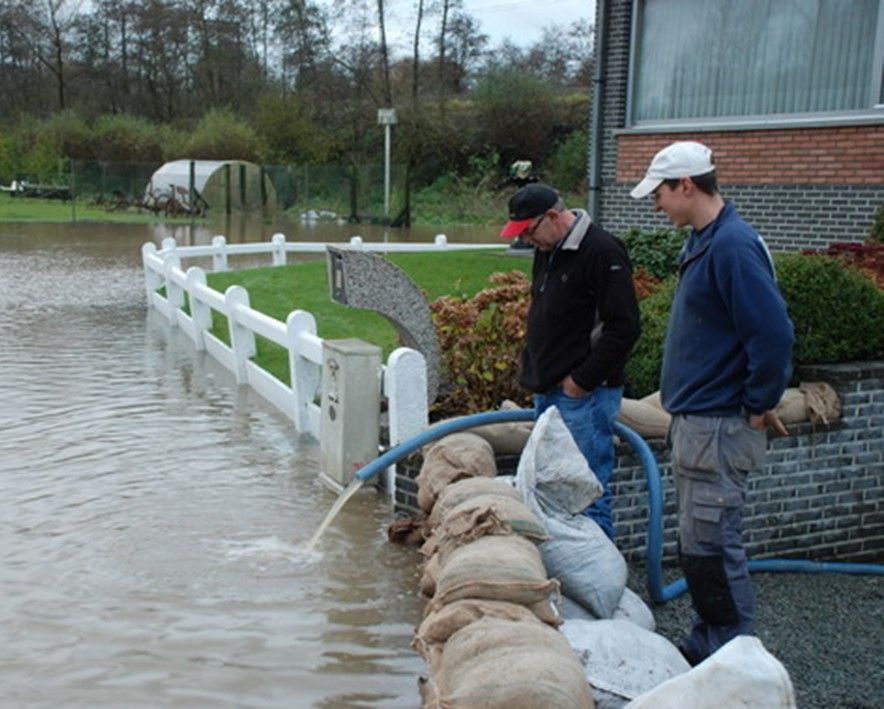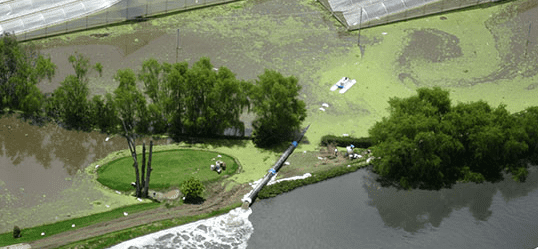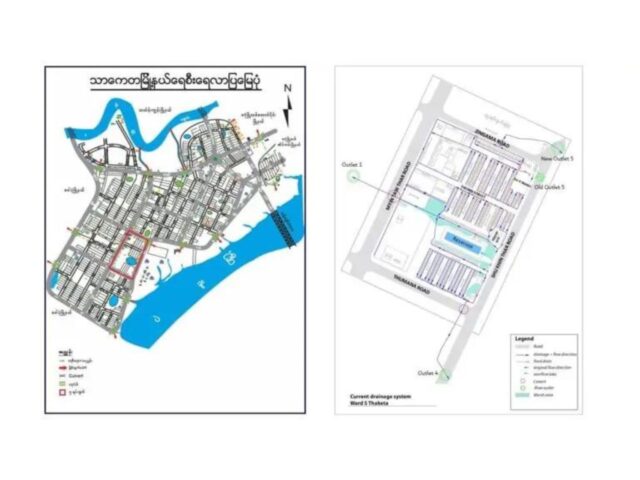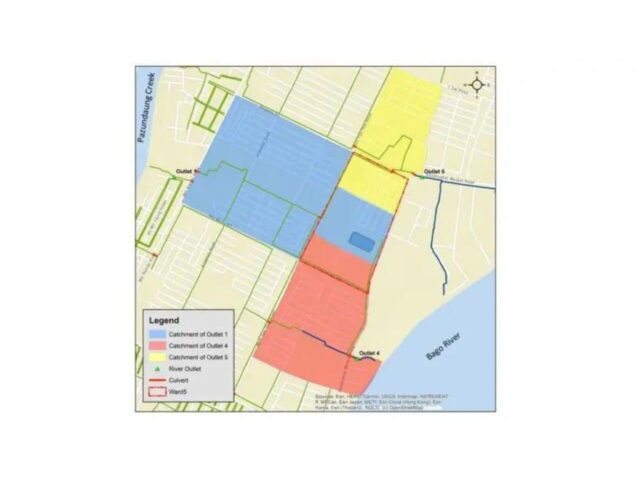There are two reasons to use pumps to get rid of water in a certain area. The first one is after a flood event – to pump out the stormwater that is stuck in lower areas, when the water cannot flow naturally back to the main drains and eventually the rivers. The water needs to be pumped out, to minimise flood impact and long-term damage to the buildings and surrounding areas.
The second reason is to prevent an actual flood event – for instances in situations when it is difficult to drain rain/ storm events due to the design of the drainage system in combination with the physical characteristics of an area. Thaketa is a flat, low-lying area surrounded by rivers. This leads to the situation that when the water levels of the river are high and there is a rain event, often the water cannot immediately be drained towards the river. Before the water level of the river is low enough for the water to be able to flow out of the drainage system, it needs to stay within the area, which can lead to flooding. A possible solution here is to pump the excess of water into the river, instead of waiting for the water levels of the water to lower. For this, pumps are needed to pump the water into the river at the location of the outlets, or at other suitable areas.
There are a variety of pump types, ranging from small pumps for household use to large pumps for street level interventions.
The main drawback of pumping water out of an area is that it is an expensive intervention – the pumps themselves are expensive as well as the energy needed to pump the water.
Because of the high costs we didn’t develop this solution any further. Instead, we decided to work with YCDC on improving the current drainage system (see here).


Multi-Criteria Analysis

| Criteria | Level of impact (1-5) | Remark |
|---|---|---|
| Impact 1: high impact 5: low impact |
1 | Pumping excess water to “high ground” or into a lake/river can make a lot of difference (done around the world)- |
| Potential local ownership (by community/ YCDC) 1: easy to reach ownership 5: difficult to reach ownership |
3 | Will need explanation and developing/ implementing together with stakeholders |
| Level of effort in coordination with Stakeholders 1: little effort 5: major effort |
Depends on design and implementation | |
| Technical aspects – complexity 1: easy, uncomplicated 5: difficult, complex |
3 | use existing techniques, but need to analyse best locations etc |
| Implementation costs (project costs) 1: low costs 5: high costs |
2 | Low – YCDC or find a partner |
| Man hour costs (project team) 1: few hours 5: many hours |
2 | Low – find partner or done by YCDC or WO |
| Implementation Time 1: little time 5: a lot of time |
3 | engagement YCDC |





